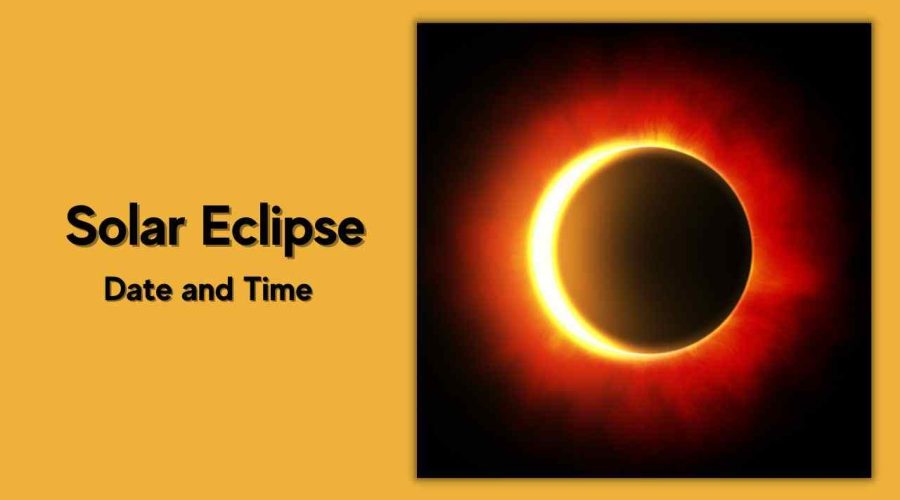All You Need To Know About Solar Eclipse 2023 (Surya Grahan 2023)
In case you are searching about “Solar eclipse 2023 dates” or “Surya Grahan 2023 dates”, you are at the right place.
A Solar eclipse in 2023 is one of the most awe-inspiring phenomena that not only leaves awe-inspiring effects but also leaves observers in wonder. Using safety equipment and filters, people from throughout the world observe the event for its astronomical, scientific, and astrological significance.
Many people believe that Surya Grahan causes profound changes in an individual’s life. On the other hand, many people believe that these are hopeful events that leave people with a positive impression. An eclipse impacts virtually every aspect of your life, from your health and career to your personal life and income.
In this article, we would outline the timings of Solar eclipse 2023 throughout the year 2023. Additionally, we would also discuss the types of Solar eclipses
Various Kinds of Solar Eclipses
Surya Grahan (Solar Eclipse) is comprised of four distinct types, each of which is brimming with meaning and significance. Let us explore the specifics below to determine the significance for individuals:
• Total Solar Eclipse: A total Solar eclipse happens when the Moon casts its umbral shadow on Earth and envelops roughly one-third of the planet’s surface within a few hours. During this time, the Sun’s outermost layer, Corona, is exposed. These eclipses are brief and non-protracted (maximum 8 minutes).
• Partial Solar Eclipse: These eclipses occur when the Moon casts only a partial shadow on the penumbral area. In such a circumstance, the majority of the Sun is visible. However, it may change based on the position and orientation of the Moon.
• Annular Solar Eclipse: This is an uncommon type of solar eclipse. But also a majestic one! This is a portion of a fractured eclipse, which is quite distinct from a total eclipse. You may be familiar with the Ring of Fire. So this is what the annular solar eclipse looks like. It occurs when the Moon passes directly through the Sun’s core.
• Hybrid Solar Eclipse: This is the second-rarest type of solar eclipse. You can observe it when the Moon is on the border of the umbral shadow and practically touching the surface of the Earth. Even if it did not properly strike the Earth, it passes precisely in front of the Sun. The initial manifestation is a total Solar eclipse. However, it becomes annular again in the future.
Solar Eclipse 2023: Date, Time, and Location
There will be as many as two solar eclipses in 2023. Listed below are all solar eclipses that will occur in 2023:
| Type of Solar Eclipse | Date | Time | Locations |
|---|---|---|---|
| Hybrid Solar Eclipse 2023 | Apr 20, 2023 | 09:46 AM to 9:47 AM | South/East Asia, Pacific Ocean, Australia, Indian Ocean, Antarctica |
| Annular Solar Eclipse 2023 | Oct 14, 2023 | 11:29 PM to 11:34 PM | West in Africa, North America, South America, Pacific Ocean, Atlantic Ocean, Arctic Ocean |
Kindly note that the duration mentioned above is the time of the maximum eclipse.
Hybrid Solar Eclipse 2023:
The first Solar eclipse of 2023 will occur in the sign of Aries in April 2023. It will directly influence those with the zodiac signs of Aries, Cancer, Libra, and Capricorn. In addition, those born under the zodiac signs of Taurus, Leo, Scorpio, and Aquarius will see considerable changes. The maximum duration of the eclipse would be one minute. However, the following is a comprehensive list of events:
Partial Solar Eclipse Beginning: 07:04 AM
Full Solar Eclipse Beginning: 08:07 AM
Maximum Hybrid Solar Eclipse: 09:46 AM
Full Eclipse Ending: 11:26 AM
Partial Eclipse Ending: 12:29 PM
Annular Solar Eclipse 2023:
On October 14, 2023, the second Solar eclipse of 2023 will occur in the Libra zodiac sign, affecting the Aries, Cancer, Libra, and Capricorn zodiac signs. The duration of this annular solar eclipse is around 5 minutes. And the following is a comprehensive list of events:
Partial Solar Eclipse Beginning: 08:33 PM
Full Solar Eclipse Beginning: 09:40 PM
Maximum Annular Solar Eclipse: 11:29 PM
Full Eclipse Ending: 01:18 AM
Partial Eclipse Ending: 02:25 AM

